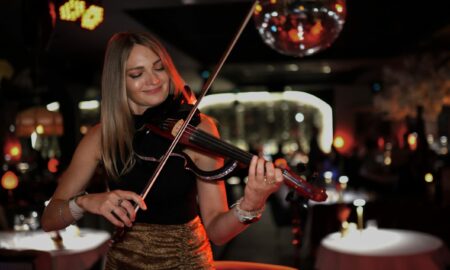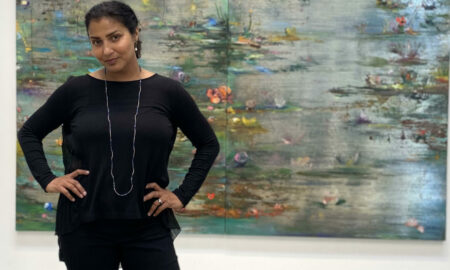

Today we’d like to introduce you to Emily Hopkins.
So, before we jump into specific questions about the business, why don’t you give us some details about you and your story.
I grew up in Baltimore city and was raised by a community of politically active folks who were very involved in social justice movements. I had the privilege of working in many non-profits with the opportunity to teach art from a very young age. I had a couple of life-changing experiences working with Habitat for Humanity and teaching art to families of homicide victims at the Baltimore Bereavement center. I knew at that point that connecting artists to communities with regenerative strategies had to be core to my work.
I was 16 when I first met Karen Atkinson, one of the founders of Side Street Projects while interviewing to go to Calarts. The work of Side Street was one of the reasons I decided to drop out of high school, get my GED, and move to California to go to CalArts. I first visited Side Street when I was 17 on a field trip in Karen’s Class where I saw the woodworking buses being built. I said to myself, “someday I want to run that”. I was hired as a teaching artist in 2002, and by 2003, I was managing the woodworking program. I have been the executive director since 2010.
We’re always bombarded by how great it is to pursue your passion, etc – but we’ve spoken with enough people to know that it’s not always easy. Overall, would you say things have been easy for you?
Having been at this organization for my entire adult life, Impostor Syndrome is a real thing. It is also a challenge for anyone in a leadership role in a service organization to hold space for themselves when taking care of others. I sometimes feel gutted at the end of a day, and don’t always do the best job asking for help. I say this because this experience is common for Executive Directors in the non-profit sector.
As an artist, I acknowledge that I have set aside my art practice to be an administrator, but I also feel that running Side Street Projects is a part of my art practice. At this current socio-political moment, my voice does not need to be the loudest as a white woman. I feel like my work can be more impactful if I am listening and holding up other artists’ voices. I have to constantly check myself and my privilege to break down repressive frameworks that impact the artists who we work with and those in our greater community.
Please tell us about Side Street Projects.
Side Street Projects was founded in 1992 by Karen Atkinson and Joe Luttrell. As an artist-run organization, our mission is to give artists of all ages the ability and means to support their creative endeavors. We do this through educational programs and artist projects that nurture relationships between artists and communities to promote creativity, wellbeing and the potential for collective growth.
We use mobility to meet folks where they are. “The Woodworking Bus” teaches children design and fabrication through tool-based curriculum. Our teaching artists lead local 2nd graders on walking public art tours and then go into the classroom to collaborate on public art for the schools. We present community-based Artist Projects with emerging and established socially engaged artists. These projects are integrated into the free community programming offered every Saturday.
I think what makes Side Street special is our scrappy DIY ethos. Everything that we do encourages creative problem solving and self-reliance within a hands-on art-making context, which is reflected in our unusual operating model. Our offices are restored vintage trailers and modified shipping containers. It all runs on a mobile solar energy array. Much like our operational approach, we believe that deep collaboration between community members, government agencies, and cultural organizations makes our whole greater than the sum of its parts. We maintain a horizontal dialogue with our artists and community that continuously shapes the organization and its programs. Our programs evolve but our core values have remained consistent for over 25 years. At the heart of our work, we are connecting artists to communities and sharing skills and knowledge through creating together.
If you had to go back in time and start over, would you have done anything differently?
I don’t know if we would do things differently, but the social, political and economic climate is constantly evolving. Twelve years ago, when we decided to make the entire organization mobile, it was a different time. When we became mobile, the real estate market was about to crash. There were tons of vacant lots and stalled developments. Now all of that land has been bought up by investors or is being developed. Everyone wants to do pop up projects on vacant lots, so land-owners are burnt out by the requests. We are now looking at settling into a permanent home while allowing many of our programs to remain mobile so that we can continue to meet the community where they are while maintaining stability. We have some exciting progress on this right now, but we can’t talk about it yet.
Contact Info:
- Website: www.sidestreet.org
- Phone: (626) 798-7774
- Email: [email protected]
- Instagram: www.instagram.com/sidestreetorg
- Facebook: https://www.facebook.com/sidestreetorg/




Suggest a story: VoyageLA is built on recommendations from the community; it’s how we uncover hidden gems, so if you or someone you know deserves recognition please let us know here.




















